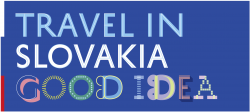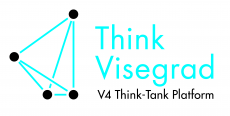Visit visegrad.group for the current website.

| Tue | Wed | Thu | Fri | Sat |
|---|---|---|---|---|
| 1 | 3 | 5 | 6 | 8 |
| Tue | Wed | Thu | Fri | Sat |
|---|---|---|---|---|
| 6 | 5 | 8 | 8 | 9 |
| Tue | Wed | Thu | Fri | Sat |
|---|---|---|---|---|
| 8 | 6 | 7 | 8 | 8 |
| Tue | Wed | Thu | Fri | Sat |
|---|---|---|---|---|
| 6 | 6 | 6 | 9 | 8 |
Joint Statement by the Visegrad Group States on the Scenarios of Trans-European Transport Network Development
Brdo, Sep. 23, 2021
In the context of the ongoing process of review of the trans-European transport network (TEN-T) and bearing in mind the Joint Statement of the Ministers for Transport of the Visegrad Group countries (the Czech Republic, Hungary, the Republic of Poland, the Slovak Republic) of December 3, 2020, which in particular emphasised the importance of key cross-border projects connecting the V4 countries, we present below common observations on the TEN-T network development scenarios.
General observations
In the opinion of the Visegrad Group countries, the goal of the revision of the regulation on the TEN-T network should represent a reliable, long term designation of transport infrastructure, ensuring the adaptation of the network maps to the current infrastructure priorities of national implementation plans (serving common interests of both of the individual Member States and the EU).
In this respect, the completion of the TEN-T core network by 2030 should remain the key priority. Introducing new requirements for the TEN-T network without proper analysis of its impact, without additional time and adequate resources for their implementation seems to be very risky. It may, with high probability, result in failure to meet the set deadlines, reducing the viability of the TEN-T policy as well as in a potential necessity to undertake further investments in already completed sections of transport infrastructure at the expense of closing gaps and removing bottlenecks on the network. Resource efficiency should remain a key principle.
At the same time, we would like to draw the attention of the European Commission that the suggested increase in the requirements for the TEN-T network coincides in time with a significant reduction in the funds earmarked for investments in transport infrastructure for the cohesion countries.
Therefore, an acceleration of the implementation of the TEN-T network by setting new deadlines and possibly new parameters should be accompanied by additional financial resources to secure their implementation.
With regard to the proposal to extend the application of the "do no significant harm" principle to the TEN-T network, in the absence of details on how it would function in practice, the Visegrad Group countries emphasize the need to avoid introducing solutions that could significantly hinder or slow down the implementation of some infrastructure components of the TEN-T network. Improperly applied principle “do no significant harm” could be counterproductive given the recent effort made in the Smart TEN-T Directive.[1] The Visegrad Group is fully aware of the need to support the transition to cleaner modes of transport and deployment of alternative fuels, nevertheless the timely completion of all the elements of the basic infrastructure in all modes in a prerequisite to create a truly coherent and EU-wide network, ensuring accessibility to all regions of the EU.
At the same time, if the core network is not fully completed by 2030, the introduction of an additional layer of the TEN-T network, which would need to be completed by 2040, could araise some questions, especially in a situation when neither the technical parameters, nor the specific sections to be completed by that time have been identified yet. Such additional layer of the TEN-T could be reasonable only in case of clean commitment from the European Commission side that CEF funding in the future will tackle with the projects on that additional TEN-T level as similar priority as projects on the TEN-T core network.
Railways, including high-speed rail
The Visegrad Group countries, as a general principle, positively assess the extension of the TEN-T network to integrate sections included in the Rail Freight Corridors (RFC), dominantly their main lines. Adding further elements to the TEN-T as a result, accompanied by adding new requirements for this mode of transport, should be done in a very careful manner. The railways are to play a key role in achieving the objectives of the EU sustainable transport policies what already creates very high investment needs on this mode. It is therefore a prerequisite to ensure sufficient funding for this area from the European level.
As regards ERTMS, the V4 countries support its implementation in the TEN-T network. However, we advocate for maintaining the current deadline for the development of the ERTMS system on the TEN-T comprehensive network, i.e. until 2050, and also for keeping the national class B systems until ERTMS is widely spread (both trackside and on-board) and the ERTMS service providers ensure reliable operability. Premature decommissioning could lead to safety issues and render the interoperability between main- and feeder lines impossible. The V4 countries would like also to remind the European Commission that the ERTMS deployment follows the modernisation of the basic infrastructure, given the existing needs in this regard, the acceleration of the ERTMS implementation should be done in a reasonable manner.
Increasing the attractiveness of railways for passengers is a necessary action, and travelling time is a determining factor for passengers. In the spirit of best interests in economic growth, effective mobility, technological development, environmental protection and sustainable mobility, the V4 countries are planning a joint high-speed rail project, which includes coordinated and gradual planning in the area of strategic sections and cross-border constructions and in the field of upgrading existing conventional lines to high-speed standards and/or, if necessary, the construction of new high-speed lines. Notwithstanding the advantages of higher speed, the V4 countries would like to point out that the European Commission's proposal to increase the minimum speed of passenger trains on the TEN-T core network to 160 km/h can be applied in practice only with exceptions. Otherwise unfavourable geographical circumstances, environmental aspects might significantly increase the necessary expenditures to meet this requirement. The high costs of modernising the railway infrastructure that already meets the current TEN-T requirements not only arise on the infrastructure side, but also on the availability of appropriate rolling stock.
Urban nodes and intermodal transport
V4 countries in general welcome the idea of strengthening urban layer of TEN-T policy. However, one should bear in mind that a significant extension of the list of urban nodes and linking this list to the necessity to build at least one freight and passenger terminal in each node will result in a substantial demand for financial resources. Sufficient EU funding in this area is there essential precondition to fulfill all new proposed requirements. We would also like to draw the European Commission’s attention that in case of both in terms of passenger transport (e.g., participation of municipal authorities) and freight terminals the fulfillment of this obligation may also result in competence and financial disputes since terminals mostly belong to the private sector. In the case of freight terminals, the current approach should therefore be maintained—a minimum of one terminal in each NUTS II region and additional terminals taking into account the reported minimum required performance.
The V4 countries also express doubts about the proposed requirement to report data on urban mobility (GHG emissions, accidents/injuries, modal share), creating further reporting obligations generating costs and burden for the administration. Member states are not in the position to properly analyse the effects and to discuss the needs with the interested cities as long as the data requested is not precised.
The V4 countries appreciate the positive role of Sustainable Urban Mobility Plans (SUMP) in planning sustainable urban mobility. However, we would like to emphasize that introducing the requirement to develop a SUMP by a number of specified urban centers will involve the need to ensure an appropriate legal, financial and institutional environment and appropriate financial support, even if not only those SUMPs are acceptable, which were made with the new guidelines (published in 2019).[2]
Mobility as a service is the way forward, hence the V4 countries advise a reasonable level of caution; a simple obligation without well-structured guideline on technical specifications to less advanced players does not necessarily guarantee the development of optimal solutions which could lead to the rejection of use of such technology from passengers. The lack of resources and standardised solutions would most probably lead to heterogeneous local solutions instead of being a reliable pillar in influencing modal split in favour of greener alternatives.
Inland waterways
We propose that the planned review of the TEN-T Regulation should take into account the idea to establish a double-layer network of TEN-T waterways, by complementing the existing core network of inland waterways with a comprehensive network of inland waterways, similar to other modes.
It should be pointed out that navigable waterways connected to sea ports, which do not have international class of navigability status but have the potential to reduce negative environmental externalities, including road congestion, should be considered for the comprehensive network.
The V4 countries stresses the need to extend the TEN-T network to cover new inland waterways sections by core and comprehensive network in order to establish new multi-modal transport hubs.
Alternative fuels
The V4 countries support the objectives of the European Green Deal and the Sustainable and Smart Mobility Strategy. However, one should bear in mind a different starting position of individual Member States in transition towards low-emission mobility arising particularly from a different purchasing power of their inhabitants.
The construction of a concrete number of charging/refuelling stations or on-shore power supply points with specific, high power output [kW] requires financial support from the EU, but at the same time must be financially sustainable in the long run. In this context, we would like to note that the necessary investments go far beyond the transport sector, as appropriate adjustments have to be made also in the energy distribution grid. Therefore, the development of alternative fuels infrastructure should be linked to the development of the zero-emission vehicle (LDV and HDV) or vessel fleet. In this regard, V4 countries support the setting of dynamic, but flexible targets regarding charging infrastructure in particulary for heavy duty vehicles, keeping in mind that the object to be regulated is a rapidly developing, innovative technology and the aim is not to limit, but to guide the development to a certain direction.
TEN-T Governance
The V4 countries note that the requirement proposed by the European Commission to consult national investment plans in terms of the implementation of the TEN-T network may significantly extend the process of preparation and implementation of investments in Member States (MS). We would like to emphasize that MS possess the appropriate tools for independent implementation of investment processes on their transport network, taking into account investment priorities on the main transport axes, in principle coinciding with the alignment of the TEN-T network.
The V4 Group strongly asks for keeping the current solution regarding investment plans and programmes, which must be a reasonable and balanced compromise in various political terms and at different levels—European, national and regional.
We acknowledge the potential in improved coordination, therefore we call for an optimisation of corridor alignments by reduction of overlaps concerning national sections when they largely exceed crossing, resulting in hundreds or even thousands of kilometres parallel sections, causing significant duplication.
We hope that the observations presented above will be an important contribution to the ongoing discussion on the revision of the TEN-T Regulation. We also believe that the ever-constructive dialogue with the European Commission and the European Parliament will allow for the development of optimal solutions for the implementation of the TEN-T network within the foreseen deadlines.
...
[1] Directive (EU) 2021/1187 of the European Parliament and of the Council of 7 July 2021 on streamlining measures for advancing the realisation of the trans-European transport network (TEN-T)
[2] https://www.eltis.org/sites/default/files/sump-guidelines-2019_mediumres.pdf







